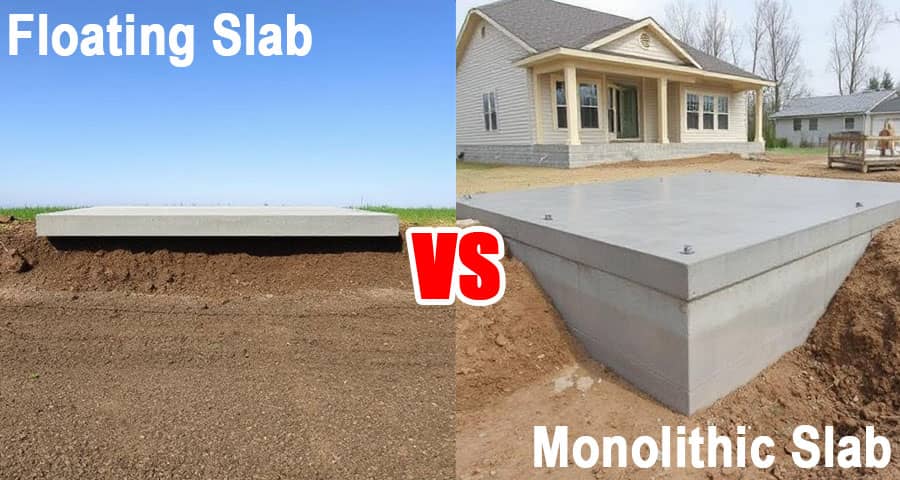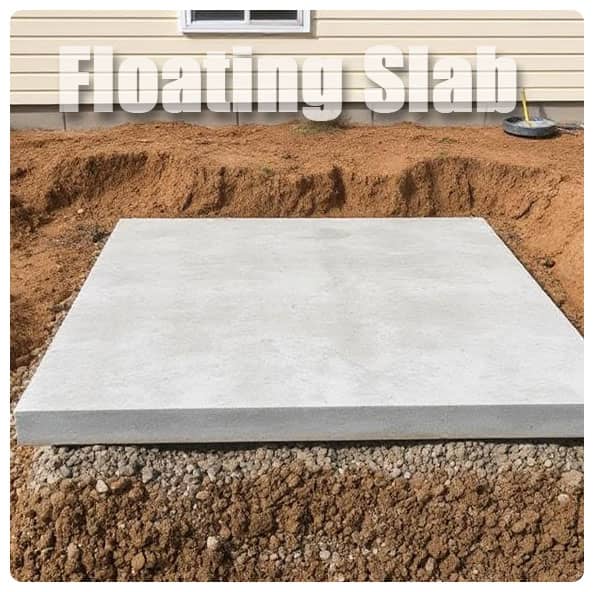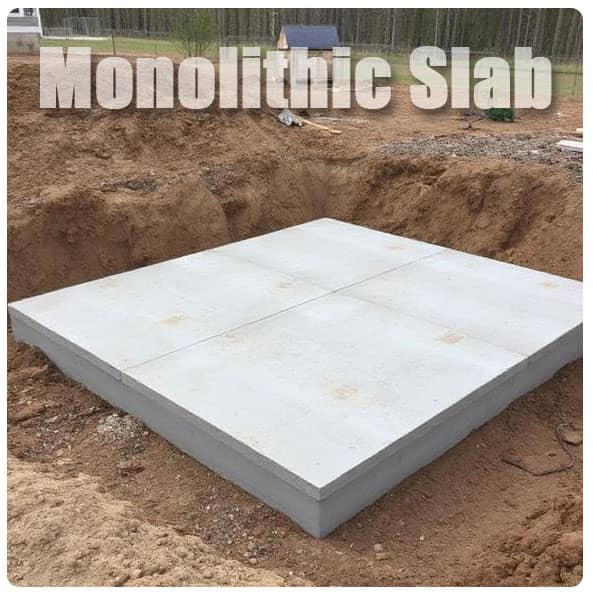Floating Slab vs Monolithic Slab: A Comprehensive Comparison for Builders and Homeowners

When it comes to concrete foundation systems, choosing the right slab can determine the durability, cost-effectiveness, and structural stability of your building. Two widely used options in residential and light commercial construction are floating slabs and monolithic slabs. Both methods offer unique advantages and are suited to specific environments and project goals.
What is a Floating Slab?
A floating slab is a type of foundation that is poured directly on the ground and "floats" on the surface without being anchored to the footing. It typically consists of a concrete slab that rests on a bed of compacted gravel or soil and is not structurally connected to the ground via deep footings.

Key Characteristics of Floating Slabs:
- Independent Structure: The slab is not rigidly tied to the foundation walls.
- Ideal for Outbuildings: Often used for garages, sheds, workshops, and detached structures.
- Frost Protection Options: Can be adapted with insulation or frost walls in colder climates.
- Flexibility in Settling Soil Conditions: Performs better where soil movement is a concern.
What is a Monolithic Slab?
A monolithic slab, also known as a monolithic slab-on-grade, is a foundation where the footings and slab are poured simultaneously as one continuous piece. This method is widely used for residential homes due to its speed of construction and cost-effectiveness.

Key Characteristics of Monolithic Slabs:
- All-in-One Pouring: Footings and slab are cast at the same time.
- Ideal for Warm Climates: Best suited for areas where ground freezing is minimal.
- Shallow Foundation: The entire structure rests on the same level.
- Lower Labor Costs: Quicker and simpler to construct compared to other foundations.
Floating Slab vs Monolithic Slab: Core Differences
1. Structural Design
- Floating Slab: Acts as an independent platform, which can shift slightly with soil movement.
- Monolithic Slab: Integrated design ensures uniform load distribution, reducing potential stress cracks.
2. Construction Process
- Floating Slab: Involves pouring a concrete slab over compacted material, often without deep excavation.
- Monolithic Slab: Requires a trenched perimeter where deeper concrete is poured to form footings before leveling the center slab.
3. Cost and Labor
- Floating Slab: Slightly more expensive due to preparation and insulation needs in colder climates.
- Monolithic Slab: Generally more cost-effective, with fewer materials and faster turnaround.
4. Soil Suitability
- Floating Slab: Suitable for expansive or unstable soils where settling might occur.
- Monolithic Slab: Requires stable soil conditions to prevent cracking and uneven settlement.
5. Climate Consideration
- Floating Slab: Works well in cold climates when combined with frost protection.
- Monolithic Slab: Better for warmer regions, where the risk of frost heave is low.
Advantages of Floating Slab
- Better Adaptability in unstable or expansive soil conditions.
- Easier retrofitting and expansion possibilities for existing structures.
- Reduces foundation cracking in frost-prone zones when insulated properly.
- Independent load-bearing capacity, avoiding foundation wall stress.
Advantages of Monolithic Slab
- Quick construction time, suitable for developers working on tight schedules.
- Lower initial cost, making it ideal for budget-conscious homeowners.
- Uniform strength, minimizing differential settlement.
- Ideal for heated buildings, as it reduces heat loss through deeper footings.
Disadvantages to Consider
Floating Slab:
- Requires additional frost protection in cold climates.
- More prone to lateral movement if not reinforced correctly.
- May need edge thickening or footings for heavy loads.
Monolithic Slab:
- Poor performance in freeze-thaw cycles, unless additional insulation is added.
- Can crack due to differential settlement on unstable soil.
- Limited design flexibility once poured.
Use Cases: When to Use Each Type
Choose Floating Slab For:
- Garages, workshops, or storage buildings.
- Construction in areas with poor or shifting soil conditions.
- Projects where foundation walls will be constructed separately.
Choose Monolithic Slab For:
- Residential homes in non-freezing climates.
- Time-sensitive construction schedules.
- Projects requiring shallow excavation and minimal labor costs.
Reinforcement and Insulation Techniques
To enhance the durability of either slab type:
- Steel Reinforcement: Use of rebar or wire mesh adds structural integrity.
- Insulated Concrete Forms (ICFs): Help maintain energy efficiency and protect against frost.
- Control Joints: Prevent cracking by allowing for thermal expansion and contraction.
- Vapor Barriers: Prevent moisture migration from the ground into the slab.
Long-Term Maintenance Considerations
- Regularly inspect for cracks or surface deterioration.
- Seal concrete surfaces to prevent water penetration and freeze damage.
- Ensure drainage systems redirect water away from the foundation perimeter.
- Apply polyurethane caulking to joints for extended lifespan.
Conclusion: Which Slab is Better?
Choosing between a floating slab and a monolithic slab depends entirely on the climate, soil conditions, building type, and budget. For homeowners in colder climates or areas with less stable soil, a floating slab with proper insulation may offer better long-term performance. For those in warmer climates with stable ground, a monolithic slab provides a fast, cost-effective foundation with fewer complications.
By understanding the advantages, limitations, and ideal use cases for each type, builders and homeowners can ensure their foundation serves the structure's needs efficiently and durably.
Please watch the following short video for Floating Slab vs Monolithic Slab
